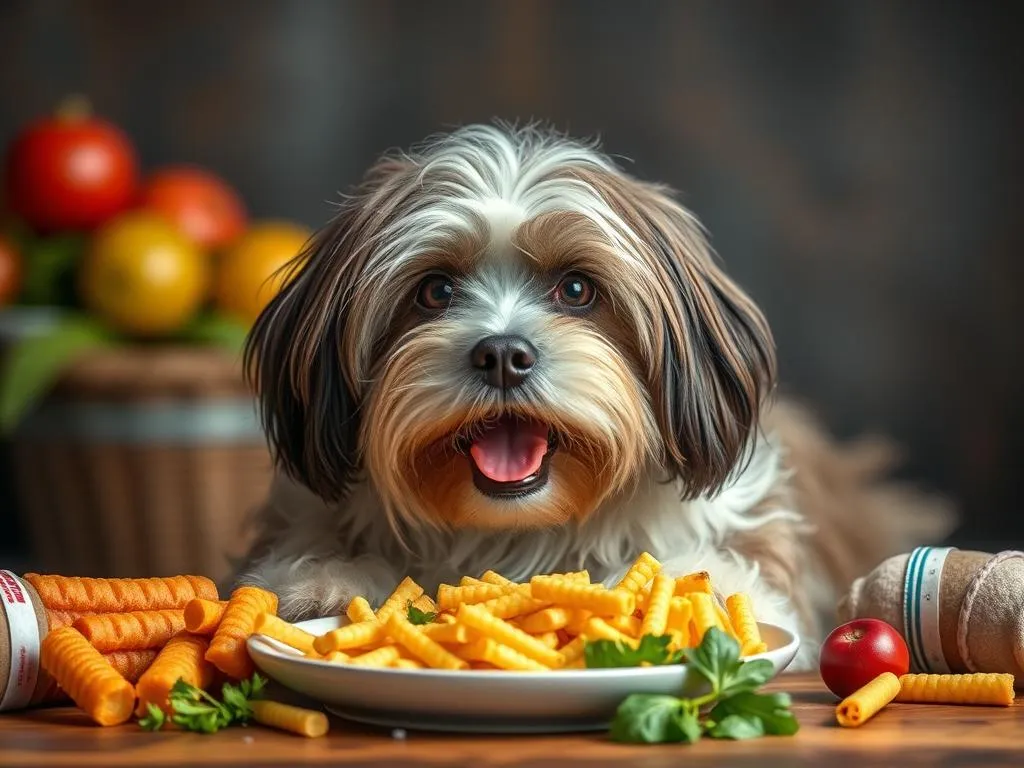
Introduction
Proper nutrition is vital for the health and well-being of our furry companions. Just like humans, dogs require a balanced diet to thrive, and this is especially true for specific breeds with unique needs. In this article, we will focus on Havanese dogs, a charming and lively breed known for their playful nature and affectionate demeanor. If you’re wondering how much food should my Havanese eat, you’ve come to the right place! Our goal is to provide clear guidelines and tips for Havanese owners to ensure their pets receive the nutrition they need to lead healthy, happy lives.
Understanding Havanese Dogs
Breed Characteristics
Havanese dogs are small, sturdy companions with a weight range typically between 7 to 13 pounds (3 to 6 kg) and a height of about 9 to 11.5 inches (23 to 30 cm) at the shoulder. Their lively spirit and affectionate temperament make them a popular choice for families and individuals alike. They tend to be playful, friendly, and social, enjoying time both indoors and outdoors.
Nutritional Needs of Havanese
Like all dogs, Havanese require a balanced diet that includes proteins, fats, carbohydrates, vitamins, and minerals. They thrive on high-quality ingredients that support their energy levels and overall health. It’s essential to provide a diet tailored to their specific needs, emphasizing the importance of balanced nutrition to support their lively disposition.
Factors Affecting Havanese Food Intake
Age
The nutritional needs of your Havanese will change as they grow.
-
Puppies: Young Havanese require more frequent meals, typically three to four times a day, to support their rapid growth and development. Puppy food is specially formulated to meet these unique needs.
-
Adults: Once they reach adulthood (around 1 year of age), Havanese generally need two meals a day. Adult dog food should be rich in protein and healthy fats to maintain their energy levels.
-
Seniors: As Havanese age, their metabolism may slow down, and they may become less active. Adjusting their diet to account for these changes is crucial. Senior dog food often contains fewer calories and added joint support.
Weight and Size
Maintaining an ideal weight is critical for your Havanese’s health. The ideal weight for Havanese typically falls between 10 to 12 pounds (4.5 to 5.5 kg). To calculate food portions:
- Determine Current Weight: Weigh your dog regularly and note any changes.
- Consult Food Packaging: Use the feeding guidelines provided on dog food packaging, which usually suggest daily amounts based on weight.
- Adjust Portions: If your Havanese is gaining or losing weight, adjust their portions accordingly.
Activity Level
The activity level of your Havanese will influence how much food they should eat.
-
Sedentary Havanese: Dogs that are less active may require fewer calories, while those that have daily playtime and walks will need more to support their energy needs.
-
Active Havanese: If your dog enjoys regular exercise, you may need to increase their food intake to maintain their energy levels. Pay attention to their activity routine and adjust their portions based on their physical demands.
Recommended Daily Food Intake
General Guidelines
As a general rule, Havanese typically require about 1/2 to 1 cup of high-quality dog food per day, divided into two meals. However, this can vary based on the factors mentioned above. Consult your veterinarian or a pet nutritionist for specific recommendations tailored to your dog’s individual needs.
Measuring Food
Accurate measurement of your Havanese’s food is essential to ensure they receive the proper portions. Here are some tools and methods for measuring dog food:
- Measuring Cups: Use standard measuring cups to portion out food accurately.
- Digital Scale: For precise measurements, especially if your Havanese requires a specific weight of food, a digital kitchen scale can be beneficial.
- Pre-Portioned Bags: Some dog food brands offer pre-portioned bags for convenience.
Types of Dog Food
Dry Kibble vs. Wet Food
When choosing food for your Havanese, you may consider:
-
Dry Kibble: This is often more economical and helps maintain dental health by reducing tartar buildup. However, ensure it is high in quality and includes appropriate protein sources.
-
Wet Food: Wet food can be more palatable for picky eaters and provides additional moisture. However, it can be more expensive and may not support dental health as effectively as dry kibble.
Homemade Dog Food
Some owners opt for homemade dog food, which can offer fresh ingredients. However, it comes with its challenges:
-
Advantages: You know exactly what your dog is eating, and you can tailor meals to suit their preferences.
-
Challenges: It can be time-consuming and requires careful planning to ensure a balanced diet. Essential ingredients include lean meats, vegetables, grains, and appropriate supplements.
Commercial Dog Food
When selecting commercial dog food, consider the following:
-
High-Quality Brands: Look for brands that use high-quality ingredients and avoid fillers like corn and soy.
-
Reading Labels: Pay attention to the first few ingredients, which should include meat sources. Also, look for complete and balanced formulations, which meet AAFCO standards.
Special Dietary Considerations
Allergies and Sensitivities
Havanese can be prone to certain food allergies. Common allergens include:
- Chicken
- Beef
- Grains (like wheat and corn)
Signs of food allergies may include itching, gastrointestinal issues, or ear infections. If you suspect your Havanese has allergies, consult your veterinarian for guidance on dietary adjustments.
Health Conditions
Some Havanese may have specific health issues that require a tailored diet. Common conditions include:
-
Obesity: If your Havanese is overweight, work with your veterinarian to create a weight management plan.
-
Joint Problems: Older dogs or those with joint issues may benefit from diets rich in omega-3 fatty acids and joint supplements.
Feeding Schedule and Best Practices
Establishing a Feeding Routine
Creating a consistent feeding routine is essential for your Havanese. Regular feeding times help regulate their digestion and metabolism. Aim for two meals per day, spaced about 12 hours apart.
Portion Control
To prevent overfeeding or underfeeding:
-
Measure Portions: Use the measuring techniques discussed earlier to ensure accuracy.
-
Monitor Treats: Treats should make up no more than 10% of your dog’s daily caloric intake.
Monitoring Weight and Health
Regularly check your Havanese’s weight to ensure they remain within the ideal range. Look for signs of healthy weight, such as:
- A visible waist when viewed from above
- A slight tuck in the abdomen
- Ribs that can be felt but not seen
If you notice significant weight changes, consult your veterinarian for advice.
Common Mistakes in Dog Nutrition
Overfeeding
One of the most common mistakes Havanese owners make is overfeeding. This can lead to obesity and related health issues. Always follow portion guidelines and adjust based on your dog’s activity level and weight.
Feeding Human Food
While it can be tempting to share your meals with your furry friend, many human foods can be harmful to dogs. Foods like chocolate, grapes, and onions are toxic to dogs, and even safe foods can lead to an unbalanced diet.
Ignoring Nutritional Labels
Understanding dog food labels is crucial for selecting the right diet for your Havanese. Don’t overlook the importance of quality ingredients and nutritional content when making food choices.
Conclusion
In conclusion, ensuring your Havanese receives the right amount of food is crucial for their overall health and happiness. By understanding their unique nutritional needs, adjusting for age, weight, and activity level, and choosing high-quality food, you can provide a balanced diet that supports their lively nature. Remember to monitor their weight and health regularly and make adjustments as needed. A well-balanced diet will contribute to a long and happy life for your beloved Havanese.
Call to Action
For personalized dietary advice tailored to your Havanese, consult your veterinarian. Subscribe to our blog for more tips on dog care and nutrition!









